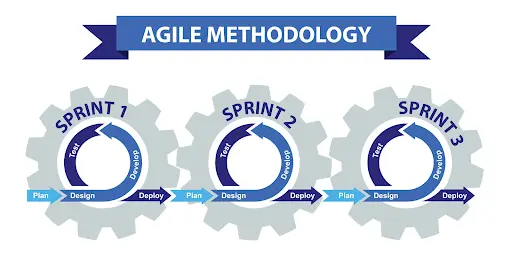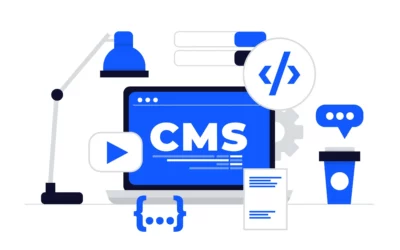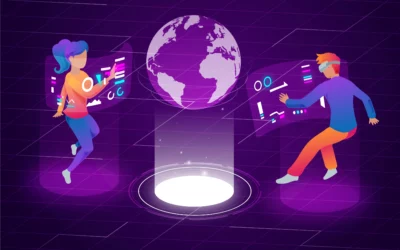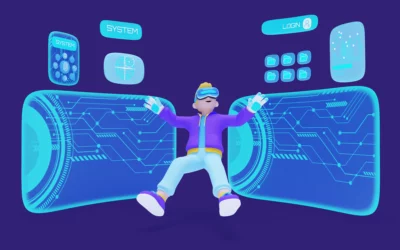Agile Process
Agile methodology is an approach to project management and software development that is iterative and incremental. It emphasizes flexibility, collaboration, and customer satisfaction. Agile development is based on the Agile Manifesto, a set of guiding principles for software development that prioritize individuals and interactions, working software, customer collaboration, and responsiveness to change.
An agile methodology is a popular approach to project management and software development that emphasizes flexibility, collaboration, and customer satisfaction. Like any approach, Agile has its own set of advantages and disadvantages. Here are some of the pros and cons of Agile methodology:
Pros
- Adaptability: Agile methodology is known for its ability to adapt. Unlike the traditional waterfall model, where development follows a fixed sequence, Agile allows for changes to be made at any stage of the development process. This means that the team can adjust quickly to evolving business needs or customer feedback.
- Customer Happiness: Agile methodology focuses on customer happiness. Because the customer is part of the development process, the team can make sure that the software being developed matches the customer’s needs and expectations.
- Teamwork: Agile methodology promotes teamwork and communication. The team collaborates closely with each other and with stakeholders to make sure that everyone is aligned on a common goal.
- Ongoing Learning: Agile methodology values ongoing learning. The team learns from what worked and what didn’t at the end of each sprint and uses that knowledge to make enhancements in the next sprint.
- Quicker Delivery: Agile methodology often leads to a quicker delivery. Because development happens in short cycles, the team can produce working software faster.
Agile Ceremonies
- Sprint planning: These sessions initiate each sprint. Your team determines which work from the product backlog can be completed within the time period, who will complete which tasks, and how success will be measured.
- Daily scrum (or daily stand-up): These daily check-ups help teams stay on track and mark progress. Every morning, team members discuss their progress from the previous day, their plans for the current day, and any obstacles that are preventing them from moving forward.
- Sprint review: At the end of each sprint cycle, teams hold a meeting to demonstrate what they’ve shipped and receive early feedback from stakeholders. These review sessions can be either informal ‘show and tell’ sessions or more formal meetings.
- Sprint retrospective: At the end of each sprint cycle, the team also holds a meeting to discuss what’s working (or not) on a process level, including blockers, communication issues, or a lack of resources.
- Product backlog refinement: While not always listed as an ‘official’ ceremony, product backlog refinement is a continuous process of cleaning up, adjusting, and updating your task and feature list. Some teams schedule specific times to clean up the backlog, while others do it continuously throughout each sprint.
Myths About Agile
- Agile means “no planning.”: Some people think that Agile means “no planning.” However, planning is very important for Agile projects, just as it is for Waterfall projects. The main difference is that planning happens continuously in Agile, instead of mostly at the beginning in Waterfall. This way, Agile projects can adjust quickly to any changes (such as new requirements, priorities, or scope) along the way. Before each sprint, there is a planning meeting to agree on the requirements that will be worked on and to estimate how long they will take. During the sprint, there is a daily standup meeting to plan the tasks for the day in detail.
- With Agile, there won’t be any project documentation. : The Agile team model of small, cross-functional groups that work together throughout the development process works well on both small, simple projects and large, complex projects to develop sophisticated systems. The ability of Agile teams to “break down and tackle” can be especially helpful on big projects: Forming solution teams by system features and/or architectural components can help avoid duplication during development. For example, a scrum of scrums meeting in which scrum teams share their work, especially areas of overlap and integration is a key technique in scaling scrum to bigger project teams.
- Agile requires that stakeholders and developers work in a single location: Agile requires a lot of stakeholder involvement throughout a development project. Therefore, many think that team members must all be in the same place for Agile to work well. With modern technology, this is not true anymore. Teleconferencing systems can enable daily meetings among distant workers. Similarly, screen-sharing tools often work well for spontaneous meetings between two colleagues. Main point: It’s real-time communication and collaboration that count, not where or how they happen.
- Agile only works with small projects: The Agile team model of small, cross-functional groups that work together throughout the development process works well on both small, simple projects and large, complex projects to develop sophisticated systems. The ability of Agile teams to “break down and tackle” can be especially helpful on big projects: Forming solution teams by system features and/or architectural components can help avoid duplication during development. For example, a scrum of scrums meeting in which scrum teams share their work, especially areas of overlap and integration, is a key technique in scaling scrum to bigger project teams.
- With Agile, the final product is not defined until development is done: In Waterfall development, the end product is fully specified by requirements before the first line of code is written. While this approach is useful in cases where all product details are clear upfront, any design ambiguity or unexpected changes in business processes, stakeholder needs, or data requirements can cause expensive delays. Agile, on the other hand, plans for uncertainty by only requiring a broad, general plan during the early stages of development, with the details to be gradually refined as the system is built. This approach gives stakeholders a clearer idea of what they can expect to get in the near term.
- Agile processes are more flexible and adaptable than those of waterfall: Established Agile frameworks suggest a disciplined, consistent approach to developing software. Successful Agile implementations are more process-driven and coordinated than traditional waterfall implementations. From scope management (via user story prioritization) to project management (via defined roles and events), Agile requires more discipline because a project’s scope is actively managed from planning to launch, with stakeholders reviewing progress at set intervals and providing feedback every step of the way. The flexibility of this process includes built-in protections to prevent endless release cycles.





